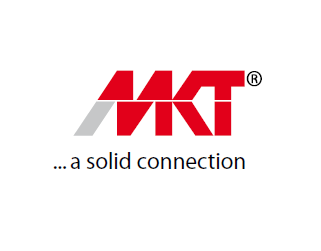Construction Trends to follow throughout 2020?
14 January 2020
Throughout recent decades, technology has driven the path for major innovations in a vast range of industries. Netflix and Prime have reshaped TV streaming and Just Eat puts thousands of restaurants at everyone’s fingertips. No one knows where the next mainstream technological advancement will come from. But one industry seems to have fallen behind in the digital age, and was even named the least digitised sector in Europe – Construction.

But there’s good news! Our industry has been one of the fastest digitally moving in recent years and has seen the creation of all kinds of innovations that are designed to combat a range of common day to day challenges the UK workforce faces.
So, as we head into a new decade, let’s take a look at some technological trends set to take Construction by storm…
Self Healing Concrete
Concrete is the most commonly used man-made material in the world. It’s adaptable and strong, meaning it can be used for a wide variety of applications. However, over time, standard concrete will deteriorate in strength and begin to crack. So, the fact that an ‘advanced material’ is very much a possibility is a massive step for the industry, which could see a lot of time and money saved, not to mention a huge reduction on the environmental impact.
Evidence shows that the self-healing material will fill in any forming cracks when the material inside the protective outer layer ‘meets the air’. By 2030, forecasts show that we’ll be using almost 5 billion metric tonnes of ‘self-healing’ concrete across many of the UK’s construction projects.
Augmented Reality Offerings
Augmented reality (AR) isn’t a new technology, but what it offers is. An increasing number of design firms and contractors are using AR combined with Building Information Modelling to create a 3D blueprint of a project. Using AR glasses, any worker can experience a full-scale walkthrough of different areas of the plan.
Essentially, AR glasses project a digital layer of information into the user’s eyeline, unlike Virtual Reality (VR) which completely immerses the users into a digital world. For example, as the digital information is overlaid onto the real-world site, the user will be able to see parts of structure how it is intended to be installed.
Collaborative Technologies
Digital is not only transforming the way companies construct projects, it’s changing the way the industry is run. Implementing new technologies into their operational processes allows contractors to increase the safety of their staff, reduce operational costs and provide innovative solutions to clients, giving them a real competitive advantage.
An example of collaborative technologies is through intelligent document management – a way of sharing files between users, usually through a cloud-based software. Collaborative technologies allow everyone involved in a project to see the latest documentation simultaneously, enabling accurate, secure and reliable communication between project teams.
Drone Technology
Drone technology has already begun to take off in the construction industry. Used as a quick alternative to standard site surveys and geographic mapping.
Drones can be equipped with cameras to capture progress of a project from above and collect data from a different perspective. The ability to carry out data collection in a much quicker timeframe means that project development can also be sped up – something that cannot be ignored in an industry renowned for project delays.
What’s more, as drone usage begins to grow, the price of the unmanned vehicles is also likely to decrease, making them a very feasible option throughout the coming years.
The Internet of Things (IoT)
The IoT is made up of devices that can connect to the internet and share data between each other. It’s one of the fastest growing trends in construction. The technology’s capability allows supervisors to closely monitor worker safety, tool maintenance, usage and productivity.
In the long term, the IoT is expected to shape the use of artificial intelligence and autonomous vehicles on construction sites around the world. It’s also expected to play a big part in allowing the workforce to make more accurate predictions around every aspect of a project, from budgets through to resources.
Do you agree that these are the big trends for construction in 2020? Let us know here.









